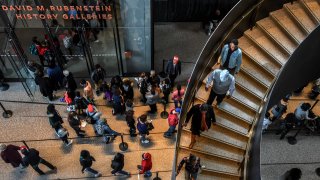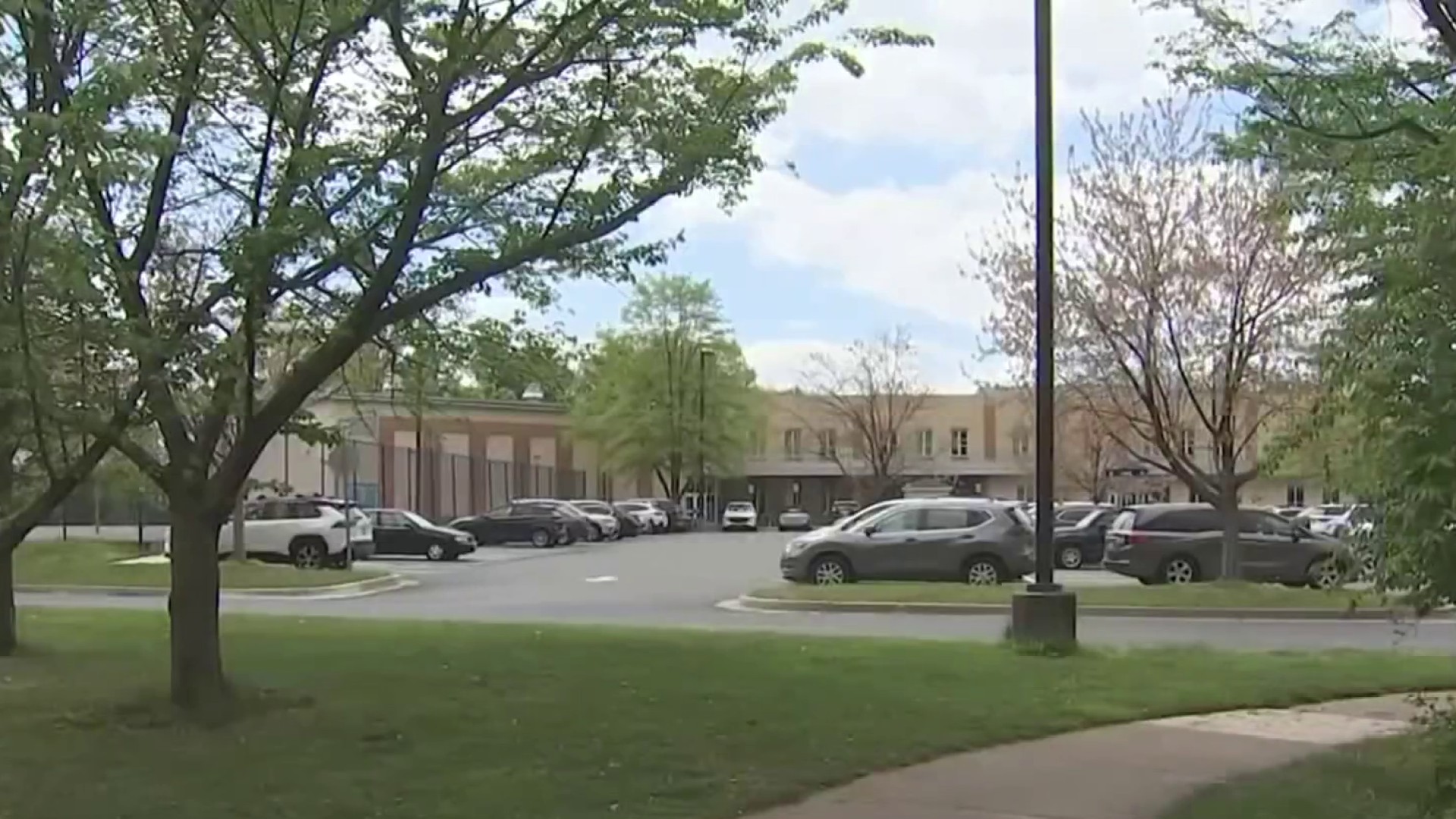
Back in the days after Saint Paul’s College closed in 2013 and the future of the campus was in jeopardy, Bobby Conner feared the history of the Lawrenceville, Virginia, school would be lost.
So, with the blessing of the college’s last president and at a point when no one else was doing anything about it, Conner launched a rescue mission. He began making frequent visits to the campus, hauling away records and artifacts in his Dodge Neon before anything happened to the buildings and the opportunity was gone forever.
Conner, a resident of Brunswick County, on Virginia's southern border, knew well the importance of the college within the community and appreciated the history of Saint Paul’s, a private, historically Black college that opened its doors in 1888 and operated until financial problems led to its closing.
“Lots of trips,” he recalled.
We're making it easier for you to find stories that matter with our new newsletter — The 4Front. Sign up here and get news that is important for you to your inbox.
At first, he was merely trying to salvage the materials; his trips to campus were usually alone, but sometimes with a friend when larger pieces needed to be moved, going building to building, office to office, file cabinet to file cabinet, looking in closets and attics, retrieving whatever looked important and stashing everything in the space above the Brunswick County tourism office. Eventually, the campus was sold, and his access ended. By then, the upstairs storage room was brimming with papers, photographs and recordings, ledger books and artwork, even a basketball banner that had been hanging in the gym’s rafters.
The question became: what to do with all this stuff?
The answer came: create a museum.
Local
Washington, D.C., Maryland and Virginia local news, events and information
"I just never in my wildest dreams felt the Smithsonian would ever set foot in Brunswick County."
Bobby Conner, vice-chairman of the James Solomon Russell–Saint Paul’s College Museum and Archives
A team of volunteers, including Saint Paul’s alumni, pulled off the feat, resulting in the James Solomon Russell–Saint Paul’s College Museum and Archives, which opened in a vacant bank building on Lawrenceville’s Main Street in 2018. It was a testament to the dedication of those involved.
In recent weeks, things have taken an even more astounding turn, as the museum has caught the attention of the Smithsonian Institution’s National Museum of African American History and Culture, which is laying the groundwork for a relationship that aims to help not only the Lawrenceville museum but to hold it up as a model for other grassroots historical preservation initiatives.
“I just never in my wildest dreams felt the Smithsonian would ever set foot in Brunswick County,” said Conner, who still serves on the county’s tourism advisory committee. “I’m just excited.”
Representatives from the national museum’s Robert F. Smith Center for the Digitization and Curation of African American History visited Lawrenceville to have a look at what’s there. They will return the first week in December and begin the process of helping the Russell Museum identify and preserve the most important parts of the collection and assist in digitization of its materials.
The Smith Center’s involvement with the Lawrenceville museum is part of its nationwide mission, using innovative technology, to preserve and share Black history and “give voice to the experiences and perspectives” of communities too often underrepresented, according to its website.
“Suffice to say that the national narrative is nothing without the local lens,” said Angela Winand, administrator of the Smith Center’s community curation program. She said the center also will offer a series of workshops for the wider community in what Smithsonian officials view could become a “multi-year relationship.”
“We were really moved by all the work they had done,” Winand said “We were touched and impacted by their enthusiasm for saving the college’s history.”
Where Conner, now vice chairman of the museum, and other volunteers – the museum has no paid staff – saw important local history to preserve, outsiders see a broader significance. Winand said the Russell Museum could serve as example to “reenergize” other small groups that have been “struggling to gain support and attention” and to get others “excited about preserving their own history.”
It's really hard, particularly for cultural institutions focused on Black history to build the type of collection that (Russell Museum) already has. I told them, 'What you have here is remarkable.'
Justin Reid, director of community initiatives for Virginia Humanities
Conner and the Russell Museum were connected to the Smithsonian by Justin Reid, director of community initiatives for Virginia Humanities, who grew up in Southside Virginia and helped open the well-regarded Robert Russa Moton Museum in Farmville, a former schoolhouse considered the birthplace of America’s student-led civil rights movement.
Reid is well-acquainted with the history of the region, so Conner invited him to see the museum after it opened in the old Main Street storefront. (It has since moved to larger quarters in the college’s former student center that is now the Brunswick County Conference Center.) Reid was impressed by what he found: the “very enthusiastic interracial coalition” behind the project and the support it’s received from local government. But he was really “blown away” by the materials that had been assembled.
“I was just amazed by how extraordinary the collection is,” Reid said. “It’s really hard, particularly for cultural institutions focused on Black history to build the type of collection that (Russell Museum) already has. I told them, 'What you have here is remarkable.
“There’s just a lot of statewide implications and national implications for this collection, and I just think it’s exciting to think that we have the Smithsonian Institute … taking an interest in Southside Virginia. That speaks volumes to the significance of what’s there.”
Among the notable elements of broader importance is the museum’s namesake, who is not as widely appreciated historically as his prolific achievements might suggest he should be.
James Russell Solomon, the college’s founder, was born enslaved prior to the Civil War but overcame hardship to become an Episcopal church leader and a towering figure in the effort to provide education to Black students in an era when such opportunities were severely lacking. He helped establish a series of churches and schools throughout Southside Virginia, and Saint Paul’s, which he founded in 1888, attracted students from around the nation and supplied much-needed teachers to surrounding areas.
Saint Paul’s story “resonates deeply with other” historically Black colleges and universities, Winand said – all the way down to the not-atypical financial struggle that eventually led to Saint Paul’s undoing.
The peril that threatened the college’s historical materials also had a familiar ring to it as often such artifacts of Black history end up being lost forever because no one recognizes their importance in time to save them, Winand said. The twist on the Saint Paul’s story was that Conner’s rescue efforts – “some of the wildest stories we’ve heard,” Winand says – produced a happy ending.
The Smith Center wants to help other communities proactively preserve their history, and it can point to Lawrenceville museum as a shining example. Winand said her group was heartened by the “wonderful welcome” they received not only from the Russell Museum board but by local leaders, who joined them for dinner on a recent visit. Among them was Leslie R. Weddington, Brunswick’s county administrator, who emailed me that she is excited to have the Smithsonian working in Brunswick and hopes it will prove to be a “long-lasting relationship.”
“Recognizing the significance and the contributions of James Solomon Russell and Saint Paul’s College is important not only for Brunswick County but also to history as a whole, and will help to continue to tell story for future generations,” Weddington said.
The Lawrenceville museum has great potential, Reid said, particularly with the support of the Smithsonian, but he added that there’s something more significant at play than mere documents and objects.
“Here you have a group of community members who are committed to telling an honest story fully in a very compelling way, and when you do that it can become this incredible learning opportunity and also an incredible economic opportunity for the community and for the region,” he said. “I think it’s important that people recognize we can still come together around this history and work together to share it fully and honestly, and when we do that, we often see the greatest outcomes.”



